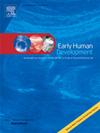Factors affecting the incidence of congenital anomaly of the kidney and urinary tract: A systematic review and meta-analysis
IF 2
3区 医学
Q2 OBSTETRICS & GYNECOLOGY
引用次数: 0
Abstract
Introduction
Congenital anomaly of kidney and urinary tract (CAKUT) is one of the most common congenital anomalies, occurring in over 1 % of live births and accounting for 40–50 % of chronic kidney failure cases in children. The prevalence of CAKUT was multifaceted and varies widely. This study aimed to report the latest evidence of incidence, trends, and risk factors associated with the incidence of CAKUT.
Evidence acquisition
We conducted a systematic search of PubMed, ScienceDirect, Scopus, and Proquest databases. The included studies were then assessed using Newcastle-Ottawa (NOS) risk of bias tools. Meta-analysis was performed using Review Manager version 5.4.1 software and presented as pooled incidence and Odds Ratio (OR) with a 95 % confidence interval.
Evidence synthesis
Eight studies in total were included from 2004 to 2022 (12.838 infants of all ages). NOS risk of bias tools indicated all studies had low risk of bias. The overall pooled incidence of CAKUT was 13,6 per 1000 births (95 % CI: 4 to 45,7 per 1000 births) in all infants and 4,9 per 1000 births (95 % CI: 1,1 to 21,3 per 1000 births) in term infants without congenital anomalies, with an increasing trend over the years. Factors, such as sex (boys) (OR = 1,53; 95 % CI 1,26-1,86), prematurity (OR = 1,46; 95 % CI 1,27-1,67), low birth weight (OR = 1,28; 95 % CI 1,10-1,48), maternal diabetes (OR = 1,81; 95 % CI 1,43-2,28), maternal obesity (OR = 1,45; 95 % CI 1,23-1,70), and maternal age (>40 years) were also found to be risk factors of CAKUT incidence. Furthermore, one study reported race (black people [OR = 0,89; 95 % CI 0,87-0,91] and Hispanics [OR = 1,22; 95 % CI 1,18-1,25]) to be a risk factor of CAKUT.
Conclusions
The incidence of CAKUT was high and showed an increasing trend over the years. Several risk factors, such as sex, prematurity, low birth weight, maternal diabetes, maternal obesity, maternal age and race were also found to be associated with CAKUT incidence. These findings should increase awareness regarding CAKUT incidence in at-risk populations.
影响肾脏和泌尿道先天性异常发生率的因素:系统回顾和荟萃分析
摘要先天性肾尿路异常(先天性肾尿路异常)是最常见的先天性异常之一,发生率超过1 %的活产婴儿,占儿童慢性肾衰竭病例的40 - 50% %。CAKUT的流行是多方面的,差异很大。本研究旨在报告与CAKUT相关的发病率、趋势和危险因素的最新证据。我们对PubMed、ScienceDirect、Scopus和Proquest数据库进行了系统的检索。然后使用纽卡斯尔-渥太华(NOS)偏倚风险工具对纳入的研究进行评估。meta分析使用Review Manager 5.4.1版软件进行,并以合并发生率和优势比(OR)表示,置信区间为95% %。2004年至2022年共纳入8项研究(12.838名所有年龄段的婴儿)。NOS偏倚风险工具提示所有研究均为低偏倚风险。在所有婴儿中,CAKUT的总总发病率为13.6 / 1000例(95% % CI: 4 ~ 45.7 / 1000例),在无先天性异常的足月婴儿中为4.9 / 1000例(95% % CI: 1.1 ~ 21.3 / 1000例),多年来呈上升趋势。因素,如性别(男生)(OR = 1,53;95 % CI 1,26-1,86),早产(OR = 1,46;95 % CI 1,27-1,67),低出生体重(OR = 1,28;95 % CI 1,10-1,48),产妇糖尿病(OR = 1,81;95 % CI 1,43-2,28),产妇肥胖(OR = 1,45;95 % CI 1,23-1,70)和产妇年龄(>;40 岁)也是发生CAKUT的危险因素。此外,一项研究报告了种族(黑人[OR = 0,89;95 % CI 0,87-0,91]和西班牙裔[OR = 1,22;95 % CI 1,18-1,25])是ckut的危险因素。结论CAKUT发病率较高,且呈逐年上升趋势。一些危险因素,如性别、早产、低出生体重、母亲糖尿病、母亲肥胖、母亲年龄和种族也被发现与CAKUT发病率有关。这些发现应该提高人们对高危人群中CAKUT发病率的认识。
本文章由计算机程序翻译,如有差异,请以英文原文为准。
求助全文
约1分钟内获得全文
求助全文
来源期刊

Early human development
医学-妇产科学
CiteScore
4.40
自引率
4.00%
发文量
100
审稿时长
46 days
期刊介绍:
Established as an authoritative, highly cited voice on early human development, Early Human Development provides a unique opportunity for researchers and clinicians to bridge the communication gap between disciplines. Creating a forum for the productive exchange of ideas concerning early human growth and development, the journal publishes original research and clinical papers with particular emphasis on the continuum between fetal life and the perinatal period; aspects of postnatal growth influenced by early events; and the safeguarding of the quality of human survival.
The first comprehensive and interdisciplinary journal in this area of growing importance, Early Human Development offers pertinent contributions to the following subject areas:
Fetology; perinatology; pediatrics; growth and development; obstetrics; reproduction and fertility; epidemiology; behavioural sciences; nutrition and metabolism; teratology; neurology; brain biology; developmental psychology and screening.
 求助内容:
求助内容: 应助结果提醒方式:
应助结果提醒方式:


